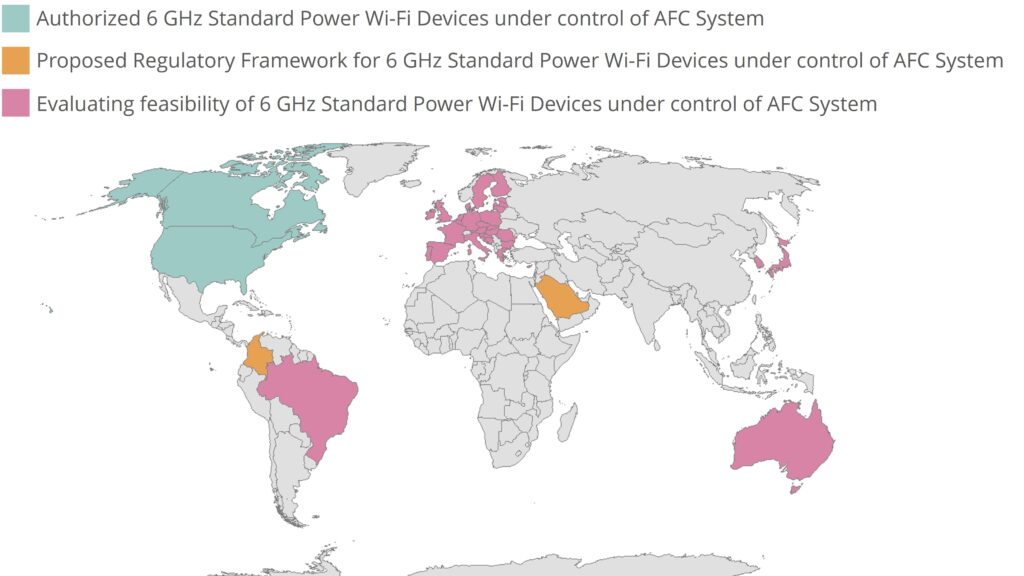Currently, AFC is operational and authorized in the United States and Canada, while several other countries including are evaluating its feasibility
In April 2020, the United States Federal Communications Commission (FCC) made 1,200 megahertz of spectrum available in the 6 GHz band for unlicensed Wi-Fi use, a capability referred to as Wi-Fi 6E. Many called the decision monumental and historic. At the time, Wireless Broadband Alliance (WBA) CEO Tiago Rodrigues said that “Wi-Fi 6E will rewrite the rules of what is possible” and that it will lead to “higher speeds, low latency and service levels that are equivalent to 5G networks.”
However, there are concerns around unlicensed Wi-Fi 6E and Wi-Fi 7 devices coexisting in the 6 GHz band with the licensed users already there, such as fixed satellite providers. Therefore, the FCC initially imposed pretty significant restrictions on the Wi-Fi devices looking to transmit in this band. More specifically, to avoid potential interference with existing 6 GHz incumbents, the FCC defined two types of device classifications with different transmit power rules for Wi-Fi devices operating on the band: low power access points (APs) for indoor Wi-Fi and standard power APs that can be used indoors and outdoors.
In order to enable standard power APs to use the 6 GHz band, the FCC then established Automated Frequency Coordination (AFC), a spectrum use coordination system designed specifically for 6 GHz operation that resembles similar systems in place such as the one that supports CBRS wireless operation. Standard power APs, particularly when used outdoors, are the most likely to interfere with existing 6 GHz users in the area, and therefore, AFC will prove most valuable in outdoor scenarios.
In early 2024, the FCC approved AFC systems from Qualcomm, Broadcom, Comsearch, Federated Wireless, Sony, Wi-Fi Alliance and the Wireless Broadband Alliance to move forward with managing spectrum access by Wi-Fi devices in the band. However, in its latest Annual Industry Report, the WBA noted that while there was a moment in which it looked as if AFC presented a key commercial opportunity, the Open AFC Software project, operated by the Telecom Infra Project (TIP), is proving to be the most popular implementation. So far, it has been adopted by the WBA, Wi-Fi Alliance and Broadcom, to provide FCC-approved AFC services in the United States.
Moving forward, the WBA expects non-profit approaches like the Open AFC Software project and for-profit approaches to coexist as some companies like Comsearch and Qualcomm are continuing to push ahead with commercial offerings.
The WBA commented that globally, AFC has “progressed cautiously” and “no disasters” have reported regarding its implementation. Currently, AFC is operational and authorized in the United States and Canada, while Saudi Arabia and Columbia have proposed regulatory frameworks for AFC and several other countries including Australia, Brazil and South Korea are evaluating its feasibility.
Regulations enabling 6 GHz Standard Power Wi-Fi Devices Under Control of Automated Frequency Coordination (AFC) System


